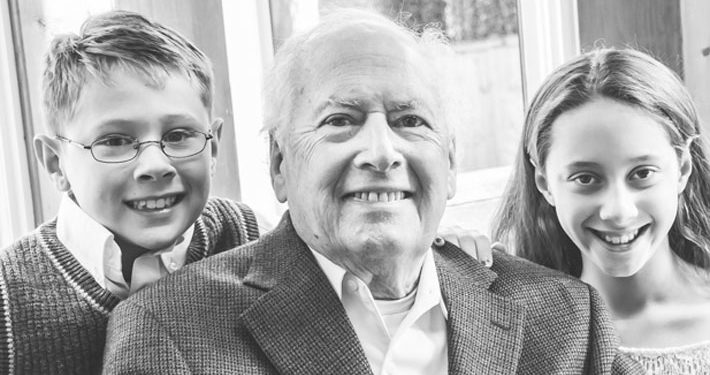Chip Hart is a nationally recognized expert on pediatric practice management as evidenced by “Confessions of A Pediatric Practice Management Consultant” (chipsblog.com), his many presentations for pediatric organizations around the country, his work with the AAP, CCHIT, CDC, AHRQ, and more. For over 25 years, Chip has worked directly with independent pediatric practices around the country in an effort to share their knowledge and improve the quality of care for children.
I have to admit that our success surprised us, though it is difficult to define success for a mission-driven self-publication like ours. There are no advertisements here, no sponsors (except PCC), and we have no hidden agenda. We think that sharing stories about successful pediatric practices is vital to the quality of healthcare in our country.
Since our first issue, we’ve had endless requests to get on our free distribution list — this time, we thought, “Why not skip to the punch line and just go to every pediatrician in the US?” And thus, from our flickering idea three years ago to the magazine in your hands.
Change Your Perspective
I recently came from an excellent state chapter AAP meeting (hey, FCAAP!), where I was asked to provide big-picture advice to independent practices. I’ve been harping for a while about the need for pediatricians to reinvent and reinvest in their practices — see my August 2016 editorial — and I was looking for a deeper explanation and to provide better guidance. I found it in a simple axiom: Get Out Of Your Office.
I mean it. To succeed as an independent practice, you need to explore, to see what your patients see. When is the last time you visited any of your friends from residency? Take some well-deserved time off to go to different parts of your town, your state, or even the country and see how pediatricians behave. I guarantee a visit to another pediatric office will be worth your time. You will see things that other practices do better and you will discover something you didn’t realize your practice does well. Then, it’s your responsibility to share this information with your peers.
You can read a great example of “getting out of the office” in the story about Tiger Pediatrics. Their practice model moved from painful dependence to glorious independence in a short time span. They didn’t simply get out of their office, they left a dysfunctional multi-specialty group and rebuilt their own practice from scratch. Now, they’ve engaged their physician community through an IPN that seeks to improve care for their community and financial stability for their practice.
What I see — and encourage — is an expanded level of collaboration and education among physicians, especially those of you newer to owning your practices, leading to new models of partnership, clinical rigor, and patient engagement. The most successful practices I work with think outside the box and turn their practices into places their patients want to be.
In this regard, you are also learning to collaborate with your patients. To compete with retail-based and minute-clinics or the recently constructed hospital clinics, you have realized that you have to update your interior spaces. You’re taking your patients’ perspectives into account. Your remodeling even extends to your practice website — what was once a weekend hobby for one of your nerdy docs is now managed by a third party and has a professional, patient-centered design.
For example, Dr. Todd Wolynn, from Kids Plus Pediatrics in Pittsburgh, PA, spoke at our Users’ Conference in July. He and his practice already have a well-deserved national reputation for the amazing programs they deliver — take a look at all the classes, most of which are free, that they offer to their communities.
In the many examples he gave in his talk about how their practice connects with patients, there is one I won’t forget — it struck me as a crystal clear example of how pediatricians are changing their businesses.
The concept? Playground reviews. Their doctors visit local playgrounds, as requested by parents, and play there. They review what’s good, what might be bad, and how safe it is. The practice posts their reviews on YouTube for the entire community. Sheer genius on so many levels. And, what a fun job.
Kids Plus Pediatrics has shaped their office, literally and virtually, into a place their patients want to visit. It’s no surprise that even though they are nestled among a series of competing health systems, the practice is bursting at the seams. Where do they get some of these ideas? From visiting other practices, sending someone to national pediatric events, and listening to their peers.
Kids Plus isn’t alone — think of The Center For Advanced Pediatrics in Norwalk, CT, who hosts an exercise program for children at a nearby gym. Or Dr. Robin Warner in Kentucky, who gave a talk on gamification for patients in her practice at the 2016 AAP NCE.
Playground Reviews
In this episode of “Kids + The Community”, Dr. Wolynn takes you to a wonderful place where he played as a kid, and where he still plays with his own kids: Blue Slide Playground at Frick Park.
Inside this issue, we feature perhaps my favorite Independent Pediatrician piece ever: a recounting of Dr. John Sutter’s nearly quixotic fight against Big Insurance that went all the way to the Supreme Court. Unlike Don Quixote, however, Dr. Sutter’s quest was fruitful. Unfortunately, it’s also a cautionary tale about a lack of peer support. He should not have had to fight alone. We can’t depend on rare, solitary figures to do our fighting for us. Use his story as inspiration to stand by your colleagues or take action.
Which leads me to The Independent Pediatrician itself. By now, I hope you’ve had a chance to visit the entirely redesigned IndependentPediatrician.com, where we plan to release new articles monthly. We don’t know how this experiment to blanket the country’s pediatricians will work, so make sure to subscribe in order to learn when we publish next.
More importantly, tell your story — if not for yourself, for your peers. Get out of your office and learn from other pediatricians. We will keep sharing your stories.










